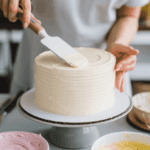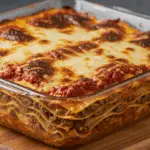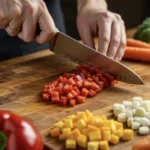They say we eat with our eyes first, and that couldn’t be more true! The way a dish is presented can transform a simple meal into a restaurant-quality experience. Professional chefs spend years perfecting their plating skills, but you don’t need a culinary degree to make your food look amazing.
In this guide, you’ll learn the secrets to plating like a pro, from essential techniques to insider tips that will make your dishes look as good as they taste.
1. Start with the Right Plate
Choosing the right plate is the foundation of great plating. Here’s what to consider:
✅ Size Matters: The plate should be big enough to allow space around the food, but not so large that it looks empty.
✅ Shape & Color: White plates are classic because they make food colors pop, but dark or uniquely shaped plates can add drama.
✅ Texture & Rim: Matte plates add a modern touch, while plates with a rim help frame the dish beautifully.
Pro Tip: Stick to neutral colors for elegant plating, or use colorful plates to create contrast for minimalist dishes.
2. Follow the “Rule of Thirds”
Ever wonder why restaurant dishes always look balanced? Many chefs use the rule of thirds, a photography technique that makes visuals more appealing.
How to Apply It to Plating:
- Imagine your plate divided into three sections (like a tic-tac-toe grid).
- Instead of centering your food, position it along one of the lines or at an intersection point.
- This creates visual movement and a more artistic presentation.
Pro Tip: Try placing proteins slightly off-center and arranging sides to complement the main dish.
3. Think About Height & Layers
A flat plate of food looks uninspiring. Professional chefs create depth and dimension by stacking or layering elements.
How to Add Height:
- Stack ingredients – place proteins over purees or starches.
- Lean elements against each other (like asparagus spears resting against a steak).
- Use garnishes strategically to create vertical movement (like microgreens or a Parmesan crisp).
Pro Tip: Avoid making the dish too tall—it should be impressive but still practical to eat!
4. Master Sauce Techniques
Sauces aren’t just for flavor—they enhance the visual appeal of a dish. Instead of spooning sauce on randomly, try these chef-inspired techniques:
🍽 Swoosh: Use the back of a spoon to create an elegant streak of sauce.
🍽 Drizzle or Dots: Use a squeeze bottle to add precise dots or a decorative drizzle.
🍽 Underpainting: Place a smear of sauce beneath the main protein to add contrast.
Pro Tip: Don’t drown the plate in sauce—less is more!
5. Use Color & Contrast to Your Advantage
Bright, colorful ingredients naturally make a dish more appetizing. Play with contrast by pairing vibrant foods with neutral backgrounds.
Color Pairing Ideas:
🌿 Green herbs (like basil or chives) pop against creamy white sauces.
🍅 Deep reds (like roasted tomatoes) look bold on dark plates.
🍊 Golden-brown crusts (on meats or pastries) stand out against smooth, bright purées.
Pro Tip: Avoid piling foods of the same color together—contrast makes the dish visually exciting.
6. Garnish with Purpose
Garnishes should never be random—they should enhance the dish in both flavor and appearance.
Chef-Approved Garnish Rules:
✅ Edible Only: Never use inedible flowers or decorations.
✅ Flavor Matters: Garnishes should complement, not overpower.
✅ Precision Placement: Instead of scattering herbs, place them intentionally for a refined look.
Best Garnishes for Different Dishes:
✔ Savory Dishes: Microgreens, citrus zest, toasted nuts
✔ Desserts: Edible flowers, cocoa powder dusting, sugar shards
✔ Soups: A drizzle of cream, fresh herbs, or crispy toppings
Pro Tip: Use tweezers for precise placement—yes, chefs actually do this!
7. Negative Space is Your Friend
Professional plating isn’t about filling every inch of the plate. Negative space (empty areas on the plate) makes the food stand out.
🔹 Why It Works: It keeps the plate from looking cluttered and directs focus to the main components.
🔹 How to Use It: Place food slightly off-center, leaving clean space for contrast.
Pro Tip: If your dish looks “busy,” remove an element or spread components out slightly.
8. Choose the Right Tools for Precision
Chefs rely on specific tools to achieve perfect plating. A few essentials you can use at home:
🔪 Ring Molds: Create circular stacks of rice, mashed potatoes, or tartare for a polished look.
🧴 Squeeze Bottles: Control sauce placement for dots, drizzles, or artistic swirls.
📏 Offset Spatula: Helps create smooth, clean sauce streaks or swooshes.
🔍 Fine Mesh Strainer: Dust powdered sugar, cocoa, or spices evenly for a professional finish.
Pro Tip: If you don’t have ring molds, use an empty tuna can with both ends removed—DIY plating hack!
9. Plate with Intention
Before serving, step back and evaluate your plating:
👀 Does it look balanced?
👀 Are the elements positioned purposefully?
👀 Does it tell a “story” through textures and colors?
A well-plated dish isn’t just about beauty—it should highlight the ingredients, flavors, and textures in the best way possible.
Key Take Away
Mastering the art of plating doesn’t require a Michelin star—just practice, creativity, and attention to detail. By applying these techniques, you can transform even simple home-cooked meals into Instagram-worthy, restaurant-style dishes.








